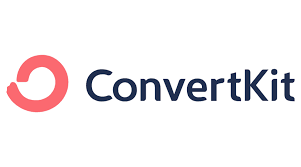Welcome to the ultimate showdown in email marketing for 2024! If you’re running an online business, a blog, or any digital platform, you already know how crucial email marketing is. In today’s digital age, it’s not just about sending emails; it’s about making each email count. That’s why we’re pitting two giants against each other: ConvertKit and Pabbly Email Marketing. This isn’t just another comparison article; it’s your roadmap to understanding which tool can catapult your email marketing to new heights. So, let’s dive right in!
| ConvertKit | Pabbly Email Marketing |
|---|---|
 |  |
| G2 Score – 4.4 out of 5 stars | G2 Score – 4.4 out of 5 stars |
| TrustRadius Score – 8.8 out of 10 | TrustRadius Score – 8.1 out of 10 |
The Battle of User-Friendly Interfaces
Ease of Use: ConvertKit
Starting with ConvertKit, what stands out immediately is its user-friendly interface. ConvertKit has been designed with simplicity in mind, making it a favorite for beginners and pros alike. The layout is intuitive, with clear labels and a minimalistic design that avoids any unnecessary clutter. This makes navigation a breeze, whether you’re setting up campaigns, segmenting your audience, or analyzing your results.
The dashboard gives you a quick overview of your recent campaign’s performance, subscriber growth, and other essential metrics at a glance. This is particularly handy for those who need to make quick decisions based on real-time data.
Creating an email campaign in ConvertKit feels like a walk in the park. The process is streamlined, and you can set up a campaign in just a few clicks. But don’t let its simplicity fool you; ConvertKit packs a punch with its robust features, allowing for personalization and automation that can make each of your subscribers feel like you’re speaking directly to them.
User Interface: Pabbly Email Marketing
On the other side, Pabbly Email Marketing brings its A-game with an interface that’s not just visually appealing but also packed with features. While it might take a bit longer to get used to, especially for beginners, the effort is worth it. Pabbly’s dashboard offers deeper insights and more detailed analytics compared to ConvertKit.
Pabbly’s strength lies in its customization capabilities. Here, you can craft emails that truly stand out. The email builder offers numerous templates and a drag-and-drop editor that can turn your email designs into a reality, regardless of your technical skills.
However, where Pabbly slightly falls short is in its navigation. With the multitude of features, it can get overwhelming for new users. The learning curve is steeper, but once you get the hang of it, Pabbly allows for a level of customization and control that ConvertKit doesn’t match.
Verdict on User-Friendly Interfaces
When it comes to user-friendly interfaces, both ConvertKit and Pabbly Email Marketing have their unique strengths. ConvertKit wins in simplicity and ease of use, making it ideal for those who value a straightforward, no-frills approach to email marketing. Pabbly, meanwhile, shines in customization and detailed analytics, appealing to users who are willing to invest a bit more time for a more tailored experience.
The Duel of Deliverability: Getting Your Emails Seen
ConvertKit’s Deliverability
Moving on to one of the most critical aspects of email marketing: deliverability. It’s not just about sending emails; it’s about ensuring they land in the right inbox and not the dreaded spam folder. ConvertKit truly understands this. With a strong reputation for high deliverability rates, ConvertKit ensures your emails reach your subscribers.
ConvertKit achieves this through a combination of factors. First, their robust server infrastructure minimizes downtime and technical glitches that can affect email delivery. Second, they have strict policies against spam, which helps in maintaining a good sender reputation. Finally, ConvertKit offers easy-to-implement best practices for email marketing, such as list cleaning and engagement tracking, which further boosts your chances of landing in the main inbox.
Pabbly Email Marketing’s Deliverability
Pabbly Email Marketing, on the other hand, adopts a slightly different approach. They emphasize a lot on personalization and segmentation, which are key to improving open rates and, consequently, deliverability. Pabbly’s intelligent algorithms help you segment your audience based on their behavior, preferences, and interaction with your emails. This means you’re not just blasting out emails but sending targeted, relevant content that your subscribers are more likely to engage with.
Pabbly also uses advanced authentication protocols like SPF, DKIM, and DMARC, which are essential for building trust with email service providers. This trust, in turn, helps in maintaining high deliverability rates. Additionally, Pabbly provides detailed reports on each campaign, which includes information on bounces, opens, and clicks, allowing you to fine-tune your strategies for better results.
Choice of Deliverability
When it comes to deliverability, both ConvertKit and Pabbly Email Marketing offer robust solutions, but with different focal points. ConvertKit excels with its strong infrastructure and anti-spam measures, ensuring a high rate of emails landing in the right inbox. Pabbly, with its emphasis on personalization and advanced authentication, ensures that your emails are not only delivered but also resonate with your audience.
In the end, the choice between the two could depend on your specific needs. If you’re looking for a reliable, straightforward solution with minimal fuss, ConvertKit is your go-to. If you’re aiming for a more sophisticated approach that involves deep audience segmentation and personalization, Pabbly Email Marketing could be the better choice.
Automation and Workflow Capabilities: Streamlining Your Email Marketing
ConvertKit’s Automation Features
Automation is the backbone of efficient email marketing, and ConvertKit shines brightly in this domain. ConvertKit’s automation tools are not only powerful but also incredibly user-friendly. They allow you to create complex email sequences based on subscriber actions without needing a degree in rocket science.
One of the standout features of ConvertKit is its visual automation builder. This tool lets you create and visualize your subscriber’s journey with ease. You can set up triggers based on subscriber actions like signing up, making a purchase, or clicking a link. From there, you can automate the follow-up actions like sending a welcome email, a discount code, or a series of targeted content. This level of automation ensures that you’re engaging with your audience at the right time with the right message.
ConvertKit also offers a range of pre-made automation templates, which are a godsend for those who are new to email marketing or short on time. These templates cover a variety of scenarios like product launches, webinar sign-ups, and subscriber nurturing, making it easy to set up complex campaigns quickly.
Pabbly Email Marketing’s Automation Tools
Pabbly Email Marketing, in the automation arena, offers a more granular level of control. Their automation features are designed for those who want to dive deep into the specifics of their email marketing strategies.
Pabbly’s automation capabilities allow for intricate workflows that can cater to the most unique and specific scenarios. You can create detailed sequences based on subscriber behavior, time intervals, and even specific dates. This allows for highly personalized and timely engagement with your audience, increasing the relevance of your emails significantly.
Moreover, Pabbly’s automation tools extend beyond email. They can integrate with other platforms and services, which means you can create workflows that not only include email sequences but also SMS messages, updates in your CRM, and more. This level of integration is invaluable for businesses looking to create a cohesive marketing strategy across multiple channels.
Automation and Workflow Capabilities: What works for you?
In the arena of automation and workflow capabilities, both ConvertKit and Pabbly Email Marketing have their unique strengths. ConvertKit is ideal for those who want a balance of power and simplicity in their automation tools. Its user-friendly interface and visual automation builder make it accessible even to beginners.
Pabbly Email Marketing, on the other hand, is a powerhouse for those who want intricate control over their email marketing automation. Its ability to create detailed and integrated workflows makes it a perfect choice for businesses with complex marketing needs.
Pricing Structures: Finding the Best Value for Your Budget
| ConvertKit | Free Plan: Offers basic features for up to 1,000 subscribers, including email broadcasts, landing pages, and forms. Creator Plan: Starting at $29/month for up to 1,000 subscribers, including automation and third-party integrations. The price increases with more subscribers. Creator Pro Plan: Starting at $59/month for up to 1,000 subscribers, adding advanced features like newsletter referral system, subscriber scoring, and advanced reporting. |
| Pabbly Email Marketing | Rookie Plan: Starting at $29/month for up to 5,000 subscribers with unlimited emails. Pro Plan: Starting at $49/month for up to 15,000 subscribers. Advance Plan: Ranges from $99/month (for 50,000 subscribers) to $1,749/month (for 1,000,000 subscribers), offering advanced features and higher sending limits. All plans include SMTP routing, workflow automation, and multi-user access. |
ConvertKit’s Pricing Strategy
When it comes to pricing, ConvertKit adopts a straightforward approach. They offer a free plan, which is a great starting point for newbies or small businesses with a limited budget. This plan includes basic features like email sending, forms, and landing pages. However, the real power of ConvertKit is unlocked in its paid plans, which offer advanced features like automation, integrations, and priority support.
ConvertKit’s pricing is primarily subscriber-based. As your subscriber list grows, so does the price. This can be both a blessing and a curse. For businesses with a rapidly growing subscriber list, the costs can escalate quickly. However, the tiered pricing structure means you’re only paying for what you need, and as your business grows, ConvertKit grows with you.
One of the standout aspects of ConvertKit’s pricing is its transparency. There are no hidden fees or charges. What you see is what you get, and you can upgrade or downgrade your plan as needed.
Pabbly Email Marketing’s Pricing Model
Pabbly Email Marketing takes a slightly different approach to pricing. Like ConvertKit, they offer a free plan, but Pabbly’s free plan includes some advanced features that ConvertKit reserves for its paid plans. This makes Pabbly an attractive option for those who want to experiment with more advanced features without an immediate investment.
For their paid plans, Pabbly offers a unique pricing model. Unlike ConvertKit, Pabbly does not charge based on the number of subscribers. Instead, they have a flat rate pricing structure. This means you pay a fixed amount, regardless of your subscriber count. This model can be incredibly cost-effective for businesses with a large subscriber base, as it offers predictability in expenses.
Pabbly also distinguishes itself by not charging for duplicate subscribers and unsubscribed contacts, which is a common complaint with other email marketing tools. This can lead to significant cost savings, especially for larger lists.
Pricing Structures: Which offers the better ROI?
In the battle of pricing structures, both ConvertKit and Pabbly Email Marketing offer compelling options, each suited to different needs and budgets. ConvertKit is ideal for those who prefer a tiered approach, paying more as their needs grow. Its straightforward and transparent pricing makes it easy to understand and manage costs.
Pabbly Email Marketing, with its flat-rate pricing, is an excellent choice for businesses with large subscriber lists, offering a more budget-friendly option in the long term. The inclusion of advanced features in its free plan also makes it an attractive option for those wanting to test the waters without immediate investment.
Ultimately, the best choice depends on your specific business needs, the size of your subscriber list, and your budget constraints.
Analytics and Reporting: Measuring Success in Email Marketing
ConvertKit’s Analytics Features
Analytics and reporting are crucial for understanding the effectiveness of your email marketing efforts. ConvertKit offers a comprehensive suite of analytics tools that help you track the performance of your emails. With ConvertKit, you can easily monitor open rates, click-through rates, subscriber growth, and engagement trends.
One of the standout features of ConvertKit’s analytics is its simplicity. The data is presented in an easy-to-understand format, making it accessible even to those who aren’t data experts. This can be particularly beneficial for small business owners or solo entrepreneurs who need to quickly assess their campaign’s performance without getting bogged down in complex data analysis.
ConvertKit also allows for segmentation in reporting. This means you can analyze the performance of different subscriber segments, giving you insights into which parts of your audience are most engaged. This can help in tailoring future campaigns to better meet the needs and interests of your subscribers.
Pabbly Email Marketing’s Reporting Tools
Pabbly Email Marketing, in contrast, offers more detailed analytics and reporting tools. Their platform provides in-depth insights into not just open and click-through rates, but also detailed subscriber behavior. You can track how subscribers interact with your emails, including the time they spend on them, the links they click, and even their geographical location.
Pabbly’s reporting goes a step further by integrating with external analytics tools like Google Analytics. This integration allows for a more holistic view of your marketing efforts, showing how your email campaigns contribute to your overall business goals.
The level of detail in Pabbly’s reporting makes it a powerful tool for businesses that are focused on data-driven decision-making. However, it’s worth noting that the complexity of the data might be overwhelming for beginners or those who prefer a more straightforward approach to analytics.
Analytics and Reporting: The importance of Data
In the domain of analytics and reporting, both ConvertKit and Pabbly Email Marketing excel, but in different ways. ConvertKit offers an easy-to-use platform with straightforward analytics, ideal for those who want quick insights without deep diving into data. It’s perfect for small businesses or individuals who need to make quick, informed decisions.
Pabbly Email Marketing, on the other hand, is a powerhouse of detailed analytics and advanced reporting. It’s suited for businesses that rely heavily on data to guide their marketing strategies and who want a comprehensive understanding of their audience’s behavior.
Choosing between ConvertKit and Pabbly for analytics and reporting will largely depend on your level of comfort with data and the depth of insights you need for your email marketing campaigns.

Related: Check out our free SEO suite

Integration Capabilities: Expanding Your Marketing Toolkit
ConvertKit’s Integration Options
In today’s digital landscape, the ability of an email marketing tool to integrate with other platforms and services is crucial. ConvertKit understands this and offers a wide range of integration options. Whether you’re looking to connect your email marketing with your website, e-commerce platform, CRM, or social media accounts, ConvertKit has you covered.
ConvertKit integrates seamlessly with popular platforms like Shopify, WordPress, WooCommerce, and many others. This means you can easily sync subscriber lists, automate email campaigns based on user behavior on your website, or even target emails based on purchase history. For bloggers and content creators, ConvertKit’s integration with platforms like Patreon and Teachable opens up new avenues for monetizing content and engaging with audiences.
Moreover, ConvertKit offers a simple API for custom integrations, catering to businesses with unique needs. This flexibility is a significant advantage, as it allows for a tailored email marketing strategy that aligns perfectly with your overall business ecosystem.
Pabbly Email Marketing’s Integration Features
Pabbly Email Marketing takes integration a step further. They offer not only a wide array of pre-built integrations but also specialize in connecting multiple applications for more sophisticated workflows. Their platform can integrate with over 500 external applications, including CRM systems, payment gateways, and e-commerce platforms.
Pabbly’s integration capabilities are particularly notable for their depth. For instance, integrating with a CRM isn’t just about syncing contact lists; it’s about creating dynamic interactions between your email campaigns and customer data. This can lead to more personalized and effective email marketing strategies.
Additionally, Pabbly stands out with its native integration feature, Pabbly Connect. This tool allows you to automate workflows across different applications without needing any coding knowledge. It’s a game-changer for creating complex, multi-step processes that can enhance your marketing efforts.
Integration Capabilities: What works for you?
When it comes to integration capabilities, both ConvertKit and Pabbly Email Marketing offer robust options, each catering to different needs. ConvertKit’s integration options are ideal for those who need seamless connections with common platforms and services, especially in the e-commerce and content creation spaces. Its API also offers the flexibility needed for custom integrations.
Pabbly Email Marketing, with its extensive range of integrations and the unique Pabbly Connect feature, is perfect for businesses that require complex, multi-platform workflows. It offers a level of depth in integration that can significantly amplify the impact of your email marketing campaigns.
The choice between ConvertKit and Pabbly for integrations will depend on the complexity of your marketing ecosystem and the level of integration you need for your business.
Customer Support and Resources: Ensuring You Get the Help You Need
ConvertKit’s Customer Support
In any digital tool, especially one as crucial as email marketing, having reliable customer support can make a significant difference. ConvertKit recognizes this and offers various support channels to assist their users. Their support includes email support, live chat, and a comprehensive knowledge base.
One of the highlights of ConvertKit’s customer support is the quality of their knowledge base. It’s packed with articles, tutorials, and guides that are not only informative but also easy to understand. This is a great resource for DIY problem-solving and learning how to use different features of the platform.
ConvertKit also offers webinars and workshops, which are excellent for users who prefer a more interactive learning experience. These sessions cover various topics, from basic email marketing strategies to advanced automation techniques.
Pabbly Email Marketing’s Support Services
Pabbly Email Marketing, on its part, takes customer support seriously as well. They offer email support, live chat, and a help desk to address user queries. Pabbly’s response time is commendable, with a team that is both knowledgeable and friendly.
Apart from the standard support channels, Pabbly sets itself apart with its community support. They have a thriving community forum where users can exchange ideas, solve problems, and share strategies. This peer-to-peer support system can be invaluable, especially when you’re looking for real-world advice and solutions.
Pabbly also provides a rich library of resources, including detailed guides, how-to videos, and FAQs. These resources are regularly updated, ensuring that users have access to the latest information and best practices in email marketing.
Verdict on Customer Support and Resources
Both ConvertKit and Pabbly Email Marketing excel in providing customer support and educational resources. ConvertKit’s strength lies in its extensive knowledge base and interactive learning options like webinars, making it ideal for users who enjoy self-paced learning.
Pabbly, with its responsive support team and active community forum, is excellent for those who appreciate a more collaborative approach to problem-solving and learning. The depth of their resources, including video guides, makes it easy for users to understand and utilize the platform effectively.
Ultimately, the choice between ConvertKit and Pabbly in terms of support will depend on your preferred style of learning and the type of support you anticipate needing. Both platforms are well-equipped to assist their users in making the most out of their email marketing efforts.
Conclusion
In conclusion, both ConvertKit and Pabbly Email Marketing stand out as formidable tools in the email marketing landscape of 2024. ConvertKit shines with its user-friendly interface, straightforward pricing, and robust customer support, making it an excellent choice for beginners and those who appreciate simplicity. Its automation features and analytics are also top-notch, providing a balance of power and usability.
Pabbly Email Marketing, on the other hand, excels in its deep integration capabilities, comprehensive reporting tools, and unique flat-rate pricing. It’s a great option for businesses with large subscriber lists or those needing intricate, multi-platform workflows. The level of customization and detailed analytics make Pabbly a go-to for data-driven marketers. Ultimately, your choice between ConvertKit and Pabbly should be based on your specific needs, the size of your subscriber list, and your marketing goals. Both platforms offer compelling features and capabilities, ensuring that your email marketing campaigns are both effective and efficient in reaching your audience.
Read Next
- The Rise of Voice Search: Adapting Your Content for the New Era
- Engaging Millennials and Gen Z with Tailored Content Marketing Strategies
- The Art of Repurposing Content: Maximizing Value and Reach
- Content Marketing for the Healthcare Industry: Best Practices and Tips
- Harnessing the Power of Podcasts in Your Content Marketing Strategy






















Comments are closed.